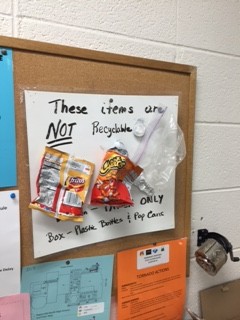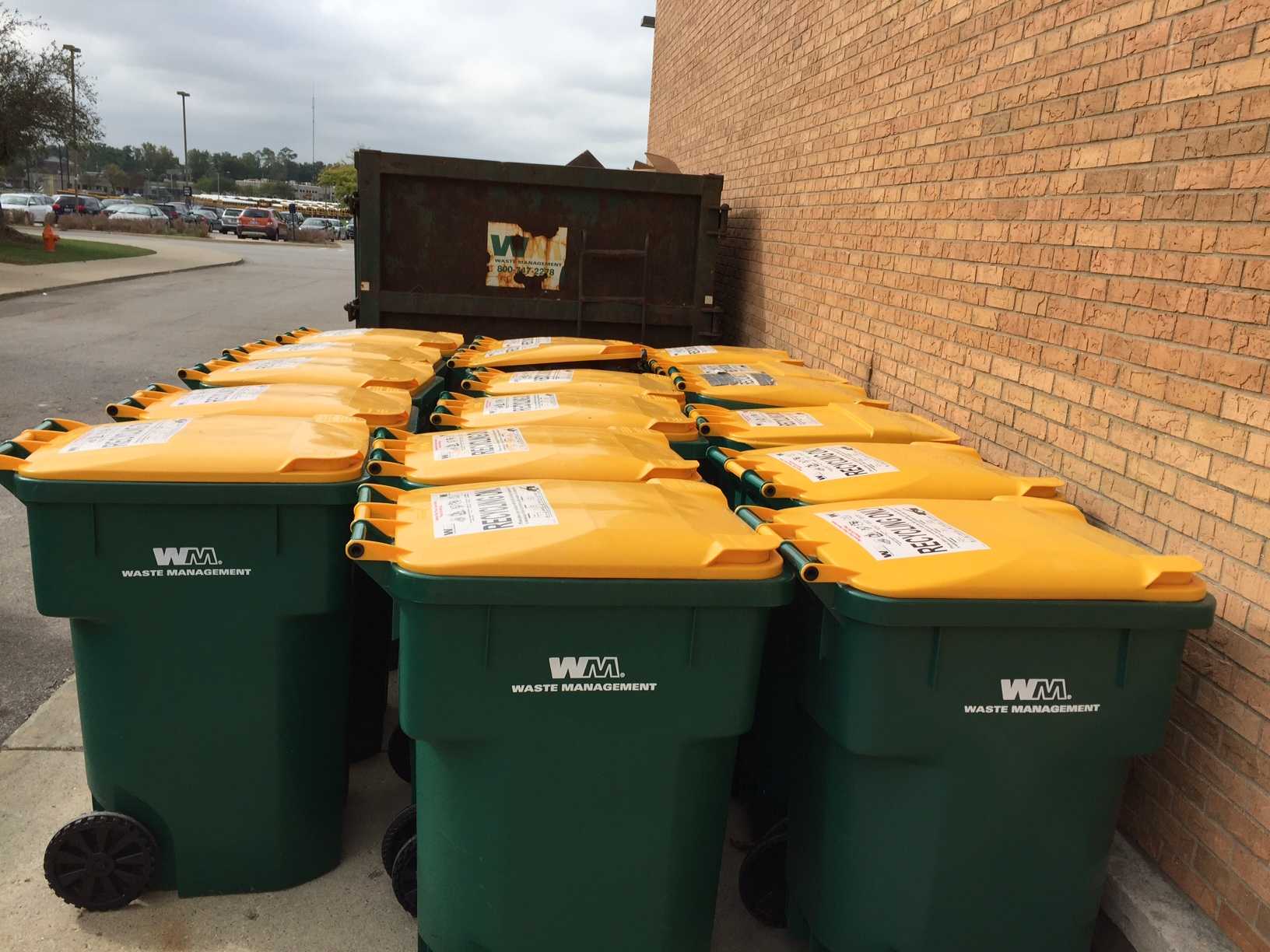Recycle, recycle, recycle: the truth behind the announcements
January 22, 2016
The daily announcements are a routine part of life at Naperville North, and most students tend to tune them out. However, there is one very important message that echoes throughout the school quite frequently: “Recycle, recycle, recycle! Second floor, please empty your bins.”
In fact, we hear that announcement twice a week when the 20 recycle carts on each floor of NNHS are emptied. That’s up to 1,600 gallons, or 10,000 pounds of recyclables in a single week, every week.
It can be mind-boggling to think about just how much a high school recycles, considering how much paper, plastic, and glass a population of more than 3,000 students will bring into the school. What’s more important though is how much of those recyclables are disposed of correctly. NNHS science teacher Jerry Kedziora is a founding member of the NNHS Blue Pride Committee, a club that focuses on teaching students how to be environmentally friendly at school and at home. The committee is largely responsible for the water re-fillers on water fountains around the school, organizing the clothing donation drive, as well as planting a fully functional garden in the east courtyard.
Kedziora estimates about only half of Huskie students actually recycle items that should be recycled. While it may be the easier option to throw everything in the garbage bin, Kedziora urges students to think before they toss.
“[Students] don’t think about it, but it does take a little bit of work,” Kedziora said. “It isn’t the easiest thing to do, but I feel walking a couple more steps isn’t going to kill me.”
Those few extra steps can prove to be crucial when it comes to saving the planet’s natural resources, animals, water quality, space and the money it costs to dispose of garbage.
There is a growing number of products being made from recycled material. Thanks to recycling, our pencils, plastic plates and cups, cardboard boxes, copy paper, napkins and countless other consumer products are being made from recycled items.

However, like many students, senior Liam Haeffele is aware of the benefits of recycling, but admits he can be a little lazy when it comes to disposing materials the right way.
“There are certain times where it just becomes too much of a chore, and I feel guilty saying that,” Haeffele said. “I would probably say every day at lunch, I’m subconsciously walking to the trash can, I dump everything in my lunch bag in there, and I don’t take the time to remove the things that could be recyclable.”
How exactly are these products recycled? According to a video from SciShow, the recyclables are first separated at a recycling plant. They are then placed onto conveyor belts specific to the type of product.
Paper, for example, is first compacted, baled and then sent to a mill, where it is placed in a bath of hot water to break down the cellulose fiber. It is then forced through screens that cleanse it of any glue or plastic and is de-inked of its content. Then it can be turned into new paper products like cereal boxes.
As for glass, it is first crushed into small pieces measuring five centimeters or less and sorted by color to be reused for a product of that specific color. Then it is crushed once again into glass cullets and sent to be reused for new glass materials.
Plastic can be a bit more complicated; because there are six types of plastics with different molecular structures, they must be separated for safety. Because they can be recycled into a wide variety of products, it is important to separate different types of plastics, such as the material in plumbing tubes from the material used to make clothing.

Anna Kraftson, technology integration specialist at NNHS, is another proud member of the Blue Pride Committee and contributes to the environment any way she can, from wearing vintage clothes to using reusable water bottles and grocery bags.
“It’s not only a part of my professional life, but my personal life,” Kraftson said. “I feel like because we have this privilege, it’s part of my moral framework that we need to be doing this. I believe in the intrinsic value of nature and recycling is one piece of that.”
Thankfully, there are also some students who do their best to benefit the environment. Junior Ben Van Poucke goes well beyond the call of duty and utilizes the recycle bin as often as he can.
“If I’m throwing away a bottle, I’ll take the bottle and throw it in there specifically,” Van Poucke said. “Every time, I would rather put it in the recycling than the garbage.”
However, despite the size of current efforts, recycling is still not a priority for many.
Lisa Corrigan, facilities manager at NNHS, explains how typical it can be for custodians to find themselves doing the jobs that students should be taking on. When announcements are made for the first and second floors to empty their bins into the large carts, it is not uncommon for the request to be unfulfilled.
“It gets pretty frustrating on our end,” Corrigan said. “Most of the time, no one even comes out of their room with them. So why are we bothering?”
Corrigan urges students to take a stronger stance on the issue and work to make the school as green as it can be. The future lies in the hands of the students, and it might be time to pass the baton.
“I think there could be a little bit more of a push,” Corrigan said. “But it needs to come from you guys.”
